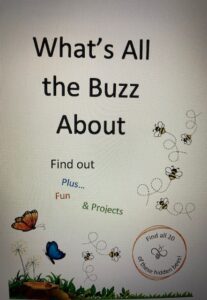Eliana's Gift
by Patrice Ahlrep, volunteer at Pollinator Pathway NW - May, 2024
It’s all about the right place and the right time. It started in mid-March of this year at my local library. I saw a poster “What’s All the Buzz, All About Pollinators!” There was a QR code to a site with a free printable booklet created as part of a Girl Scout Gold Award Project. This intrigued me since we needed something for our information booth and upcoming Pollinator Fest that would reach elementary students and their parents. The great search began as I had no Girl Scout troop number—just a first name, Eliana.
Finally, the search paid off! I contacted Eliana and her mother via email. Eliana is a bright and thoughtful high-school student. Her Gold Award Project has reached so many others, including educators, students, parents, and anyone who wants to learn more and care about our pollinators!

